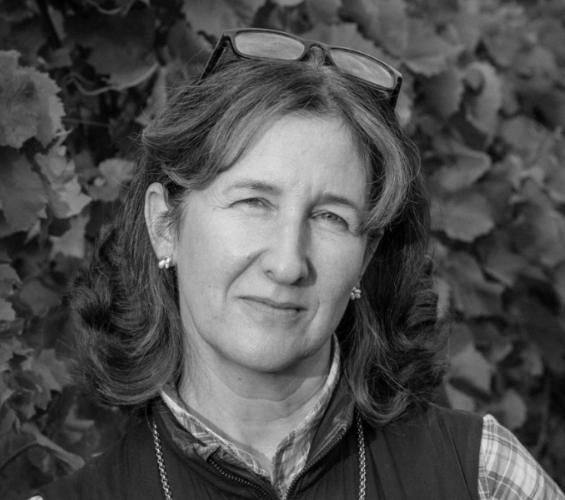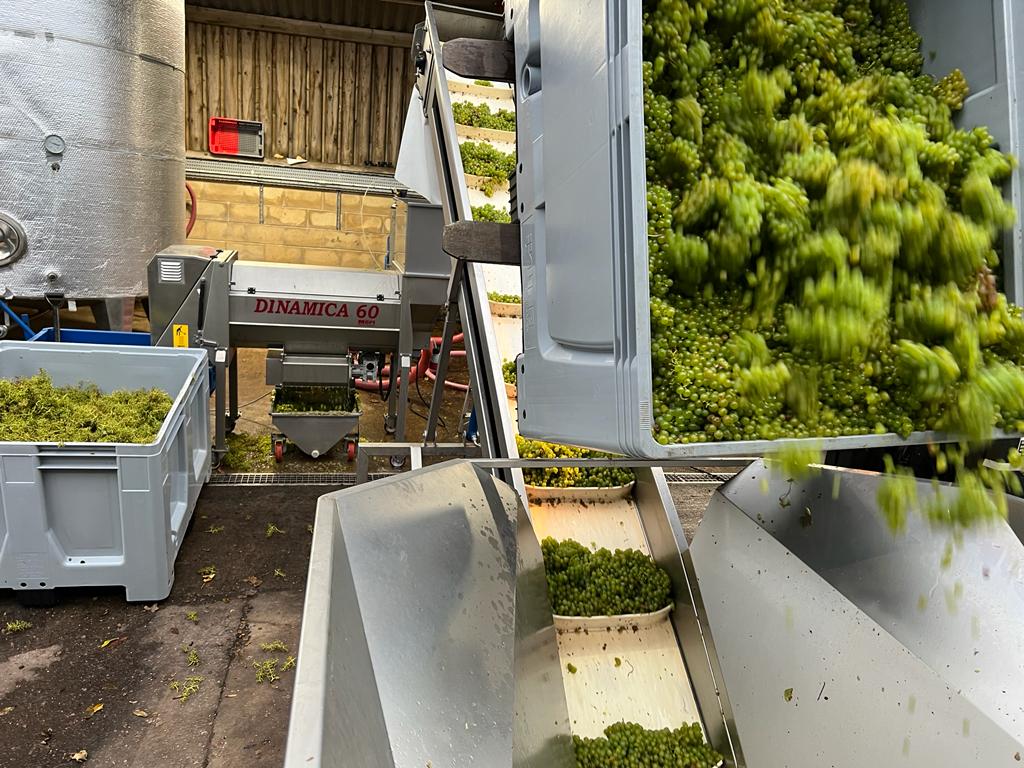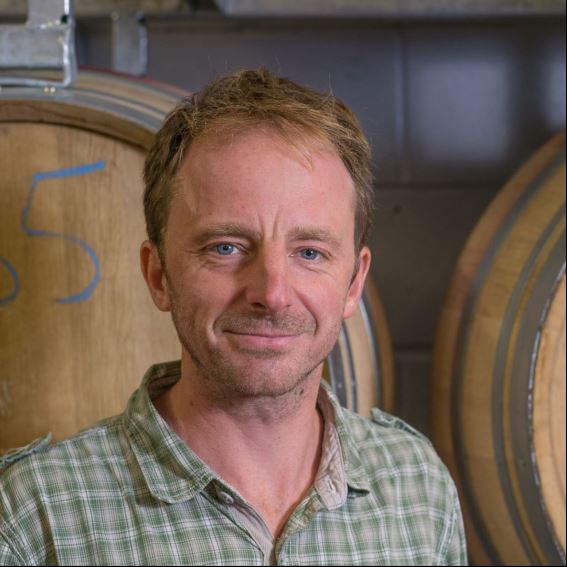How Long Do We Wait…?
Fiona Shiner, Founder
A Fine Balance
A year like 2021 highlights the importance of the long growing season in our cool climate. Every day counts.
Harvesting our grapes is a fine balancing act between allowing the grapes to reach optimum ripeness and picking them before other factors impact the quality of the fruit. Other factors may include, weather (rain and frost), wildlife (eating/damaging the berries) and disease (eg botrytis/grey mould).
How long do we wait for the perfect grapes?
In a cool climate like ours, the growing season is long. October is our busiest month for harvest when the majority of our fruit is picked and October, as we know, can be cold, wet, windy and frosty. I remember having to bring forward the harvest date for our Seyval Blanc grapes in 2010 due to a frost event on 21st October. It is not unusual in England to be harvesting in November. The longer we wait the more nail biting it becomes, not to mention having enough time to gather in all the fruit. Picking grapes takes time and people and we can only pick and press so many tonnes a day. We work long hours and 7 day weeks if needed during harvest.
The start date of our harevst will depend upon the seasons that have preceded it and 2021 has been a challenging year from the beginning to the end. A cold, frosty start to the season and a cool overcast summer, resulted in a later than usual start to harvest on the 26th September. The short heatwave in July helped to push the vines through flowering and fruit set so early predictions suggested a harvest yield in the region of 108 tonnes….a good yield coming after the small 2020 harvest of 60 tonnes. However August saw very little sunshine and lower than average temperatures. Veraison (the start of the ripening process) was late.
Disease and rain were the story in the South East of England and much of Europe, where some vineyards suffered significant reduction in yield due to spring frosts and mildew. Our story in the West was different. Although it was a sunless summer, we were not plagued by the rains and mildews to the same extent and the vines and fruit were clean and healthy enabling them to function right until the end of the harvest. This is particularly important in a late year.
Then finally the weather Gods smiled. The warm and sunny days in September and October were very welcome and much needed to help ripen the fruit. October was kind. The warmer than average temperatures and relatively dry month, allowed us to leave the fruit to hang on the vines until it had reached phenolic ripeness (when the berries reach full maturity) … but there were some nervous moments as the longer term forecasts were inconsistent, yo-yoing from dry sunny days to heavy rain and even snow, making the decision to wait another week a tricky one. Fortunately, there were no October frosts as our final picking day was November the 2nd, a lovely autumnal day with the sun accentuating the beautiful colours in the vineyard at the end of year. The result was a surprisingly good quality harvest after a lacklustre year and a nicely balanced yield of 127.2 tonnes.
Nature has a way of compensating and the long hang time on the vines has resulted in some really lovely intense, pure fruit which promises well for the 2021 wines.
Thank you to all who participated in our harvest sweepstake and congratulations to the winners.
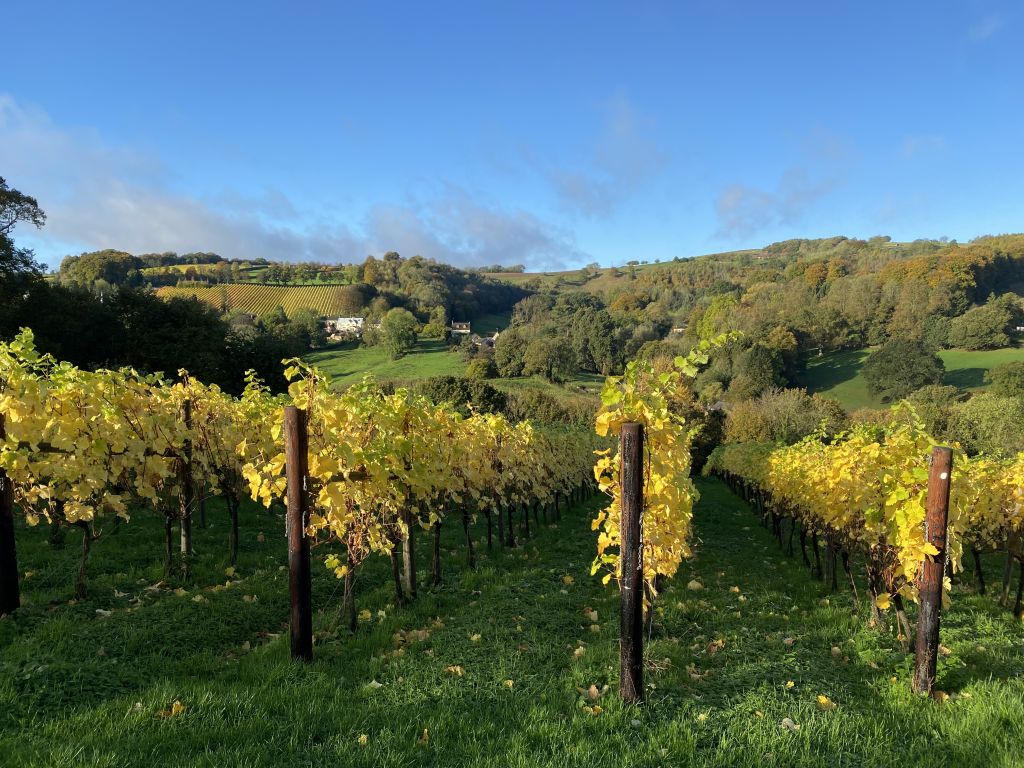
Beautiful Sunny Harevst Day!
Busy Afternoon at the Winery
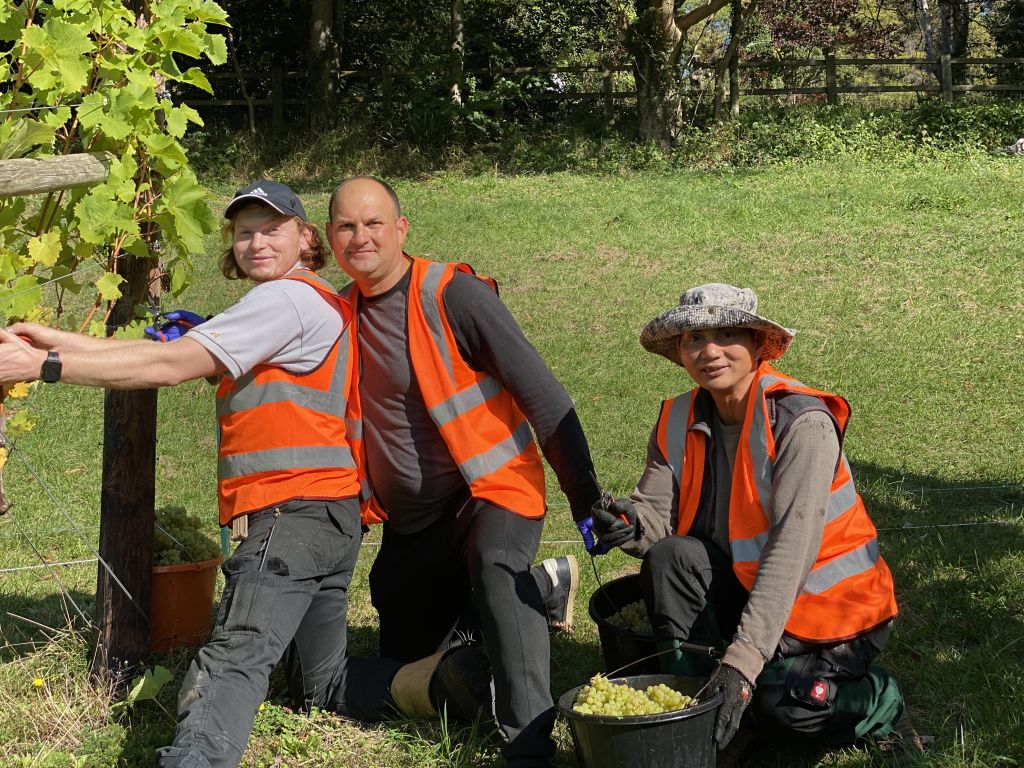
Some of the vineyard team!
From the winery...
Jeremy Mount, Winemaker
Decompression from the somewhat intense last couple of months of harvest has now been achieved, making evaluation from the winery’s perspective a whole lot easier.
At the end of September, the fruit eventually started rolling up the hill, trailer load after trailer load providing a steady flow of good quality, clean fruit across all varieties, with a thankfully trouble-free run of pressing and fermentations, from the first pick of early ripening Pinot Noir (Pinot Précoce) to the last of the Inchbrook Chardonnay.
I consider us quite lucky with the weather during harvest this year as this was the latest start date since the winery was built (2016) which meant that for most of the varieties the all-important last phase of ripening (second half of veraison) was done in the extremely mild weeks we had in October. Due to the late ripening, fairly early on we decided not to make a still single varietal Pinot Noir or Chardonnay this year. However, the clones that would have been used for these achieved perfect levels of sugars, phenolic ripeness (flavours) and acidity for some extremely good sparkling wines. They went into barrel and have just finished the primary fermentation.
The still wines this year have all finished their fermentations, all smelling very good and trouble free, with Bacchus showing signs of very good precise aromatics. Once the dead yeast has settled and fermentation temperatures have dropped the wines start to clear. This is when we begin to get an idea of the quality of each tank. There are some very interesting early indications of which tanks could be used for certain wines and next month the debating will commence: what will be used in the blend for the Culver Hill, the tanks to go for Orpheus, and whether to make a single varietal Sauvignon Blanc or another Atcombe White, or both!
There was plenty of very good Pinot Noir Précoce this year and this has been used to make a decent volume of Rosé and some Red wine. The Red recently got transferred to some very nice new barrels where they are currently going through malolactic fermentation. This will barrel age for a year, due to be bottled in March 2023.
Malolactic fermentation – this is the next stage of production for some of the sparkling wines, converting the slightly austere acidity from Malic to Lactic, giving better structure to the wine. This stage mostly takes place in barrel, but in some carefully selected tanks as well.
In brief, this year’s harvest has been both good quality and bountiful and winery operations will be ramping up from now to bottling the still wines in March, with blending, stabilising, and filtering to look forward to. Oh and of course the continuous process of disgorging and labelling the very popular sparkling wines!

